 W
WThe Bennu heron is an extinct, very large heron from the area that now is the United Arab Emirates. Remains of the heron have been dated to 2700–1800 BCE, coinciding with the Umm al-Nar period.
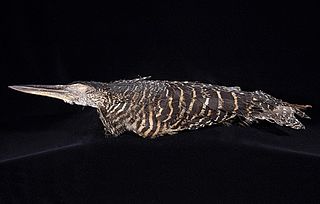 W
WThe forest bittern is a bird indigenous to New Guinea. It is the only member of the genus Zonerodius and is also known as the New Guinea tiger heron.
 W
WThe stripe-backed bittern is a species of heron in the family Ardeidae which is found in South America and Trinidad.
 W
WThe Bonin nankeen night heron is an extinct subspecies of the nankeen night heron.
 W
WBostrychia is a genus of ibises in the family Threskiornithidae. Member species are found in many countries throughout Africa.
 W
WBotaurus is a genus of bitterns, a group of wading bird in the heron family Ardeidae. The genus name Botaurus was given by the English naturalist James Francis Stephens, and is derived from Medieval Latin butaurus, "bittern", itself constructed from the Middle English name for the Eurasian Bittern, Botor. Pliny gave a fanciful derivation from Bos (ox) and taurus (bull), because the bittern's call resembles the bellowing of a bull.
 W
WButorides is a genus of small herons. It contains three similar species, the green heron or green-backed heron, Butorides virescens, the lava heron, and the striated heron, Butorides striatus. A fossil species, Butorides validipes, is known from the Early Pleistocene of Florida in the United States. Butorides is from Middle English Butor "bittern" and Ancient Greek -oides, "resembling".
 W
WCopepteryx is an extinct genus of flightless bird of the family Plotopteridae, endemic to Japan during the Oligocene living from 28.4—23 mya, meaning it existed for approximately 5.4 million years .
 W
WThe dimorphic egret is a species of heron in the family Ardeidae. It is found in Comoros, Kenya, Madagascar, Mayotte, Seychelles, and Tanzania.
 W
WThe dwarf bittern is a species of heron in the family Ardeidae. It is found in Angola, Benin, Botswana, Burkina Faso, Burundi, Cameroon, Central African Republic, Chad, Republic of the Congo, Democratic Republic of the Congo, Ivory Coast, Equatorial Guinea, Ethiopia, Gabon, Gambia, Ghana, Guinea, Kenya, Liberia, Malawi, Mali, Mauritania, Mozambique, Namibia, Niger, Nigeria, Rwanda, Senegal, Sierra Leone, Somalia, South Africa, Spain, Sudan, Swaziland, Tanzania, Togo, Uganda, Zambia, and Zimbabwe. It is a small bittern, and the same size as the little bittern, to which it is closely related. It is a rare vagrant in the Western Palearctic, with several sightings in the Canary Islands. Two individual were observed on the island of Fuertaventura in the Canary Islands in the winter of 2017. It is designated least concern.
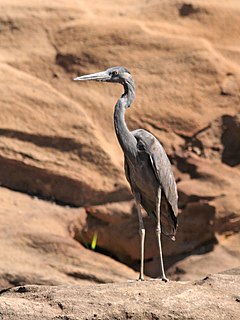 W
WHumblot's heron, also known as the Madagascar heron, is a species of heron. In Madagascar, it is common on the north and west coasts of the island, but is also found inland, especially near Lake Alaotra. It is also present in the Comoro Islands and Mayotte. Humblot's heron is an endangered species, with a population estimated at only 1,500 mature individuals. Its population is apparently declining. The major threats the heron faces are poaching and habitat destruction
 W
WThe white-crested tiger heron, also known as the white-crested bittern, is a species of heron in the family Ardeidae. It is in the monotypic genus Tigriornis. It is widely distributed across the African tropical rainforest.
 W
WThe zigzag heron is a species of heron in the family Ardeidae, also including egrets and bitterns. It is in the monotypic genus Zebrilus. It is found in Bolivia, Brazil, Colombia, Ecuador, French Guiana, Guyana, Peru, Suriname, and Venezuela. Its natural habitat is subtropical or tropical swamps.
 W
WThe Puna ibis is a species of bird in the family Threskiornithidae. It is found in Argentina, Bolivia, Chile, and Peru. Its natural habitats are swamps, marshes and lakes, and most of its range is in the Andean highlands, including the puna, but locally it occurs down to sea level. It has been domesticated by the Uru people for meat and eggs.
 W
WIxobrychus is a genus of bitterns, a group of wading bird in the heron family Ardeidae. Ixobrychus is from Ancient Greek ixias, a reed-like plant and brukhomai, to bellow.
 W
WMasillastega is an extinct aquatic bird from the Eocene of Germany. It is related to modern gannets and boobies, but unlike these birds it occurred in freshwater environments. It was found in the lake that would become the Messel Pit.
 W
WThe Mauritius night heron is an extinct night heron species from Mauritius. It is only known by seven subfossil bone remains consisted of cranium, pelvis, coracoid, ulna, radius, and tarsometatarsus found in Mare aux Songes. Only the coracoid and the tarsometatarsus are left today. It was scientifically discussed in 1893 by Alfred Newton and Hans Gadow from the Cambridge University. Newton and Gadow measured the tarsometatarsus with 81 to 87 mm. It became presumedly extinct in the late 17th century and was probably first mentioned by François Leguat in 1693 who described them as a "great flight of bitterns".
 W
WNyctanassa is a genus of night herons from the Americas, especially warmer coastal regions. They were formerly included in the genus Nycticorax, but today all major authorities recognize them as different.
 W
WPlegadis is a bird genus in the family Threskiornithidae. The genus name derives from Ancient Greek plegados, "sickle", referring to the distinctive shape of the bill. Member species are found on every continent except Antarctica as well as a number of islands. The glossy ibis is easily the most widespread of the three species. Plegadis contains the following three species:
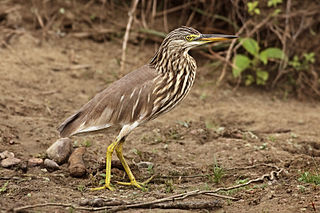 W
WPond herons (Ardeola) are herons, typically 40–50 cm (16–20 in) long with an 80–100 cm (31–39 in) wingspan. Most breed in the tropical Old World, but the migratory squacco heron occurs in southern Europe and the Middle East and winters in Africa. The scientific name comes from Latin ardeola, a small heron (ardea).
 W
WThe bird genus Pseudibis consists of two South-East Asian species in the ibis subfamily, Threskiornithinae. The giant ibis is also sometimes placed in this genus.
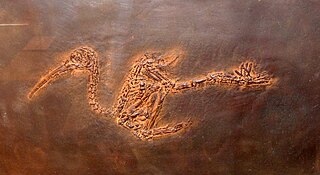 W
WRhynchaeites is an extinct genus of Threskiornithidae related to modern ibises and has a single named species Rhynchaeites meselensis. It lived in today's Germany during the mid-Eocene and its remains were found in the famous Messel pit.
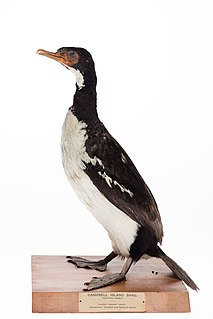 W
WThe Campbell shag, also known as the Campbell Island shag, is a species of bird in the family Phalacrocoracidae. It is endemic to Campbell Island. Its natural habitats are open seas and rocky shores. It is a medium-sized bird, around 63 cm in length, with a wingspan of 105 cm, weighing between 1.6 – 2 kg. They only breed on Campbell Island and forage within 10 km of the island.
 W
WTheristicus is a genus of birds in the family Threskiornithidae. They are found in open, grassy habitats in South America. All have a long, decurved dark bill, relatively short reddish legs that do not extend beyond the tail in flight, and at least the back is grey.
 W
WTigrisoma is a genus of herons in the family Ardeidae.